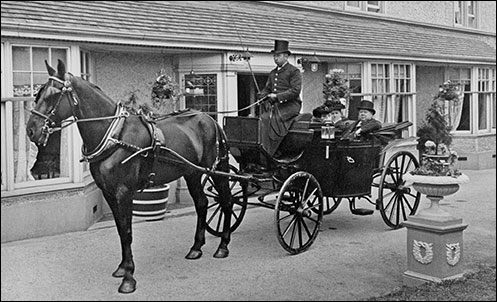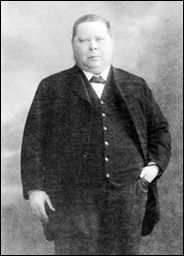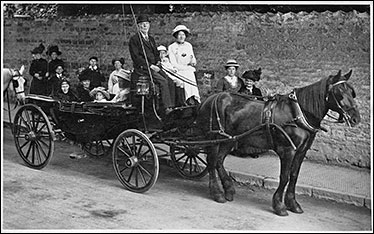| Original article by Douglas Ashby 1992, transcribed by Margaret Craddock | |||||||
|
|||||||
On a beautiful summer’s morning in July 1992, two members of the
A successful businessman and engineer, Mr. Preston was joint Managing Director of Kettering Furnaces until 1908 when he retired after making his fortune. At his death in 1913, he left £64,000, which at today’s values would be more than £6million. Frank William Preston was 77 and after his death Anna Maria lived on at The Poplars until 1942, when she died aged 92. Mr. Preston actively supported the Church and the Conservative Party. He was a stout little man and his legs were unusually short. He was driven daily to the furnaces from the Poplars. James Farrow and John Norton were his coachmen and wore silk top hats and brass buttoned coats. When older, Mr. Preston could not bend to tie his shoe laces, then this was done for him by James Farrow, by then employed on odd jobs in the gardens. After tying the laces James had to turn round and receive a gentle kick on the backside!! During his last illness in 1913, Mr. Preston liked Gerald Farrow, James’ four-year-old grandson, to call at The Poplars where he was taken into the sick room to recite “The Village Blacksmith” to the patient who was lying on the bed. After thanking Gerald, he would send him into the kitchen where the cook and maid, both named Mary, would reward him with a glass of milk and a slice of cake. On May Day each year Mr. Preston liked new potatoes to be dug, no bigger than pigeon’s eggs, and prepared for the table, believing that to be really enjoyable a potato should provide only a single mouthful.
After the death of her husband, Mrs Preston purchased St Crispin’s Hall from Mrs Jacques for £700 and it was renamed The Preston Memorial Hall. The building was vested in the Diocesan authorities to be used as a Church Hall. Built originally in 1891 by the then Rector F N Newman, the Hall was a popular venue for social gatherings, meetings, dances, etc. Sadly the building became so dilapidated it was demolished in 1982. The Poplars was purchased by the late Alderman A G Miller for a sum something in excess of £4,000 and later that same year became the Council Offices. In more recent time the paddock became a But – the family name survives in Preston Court. |
|||||||


